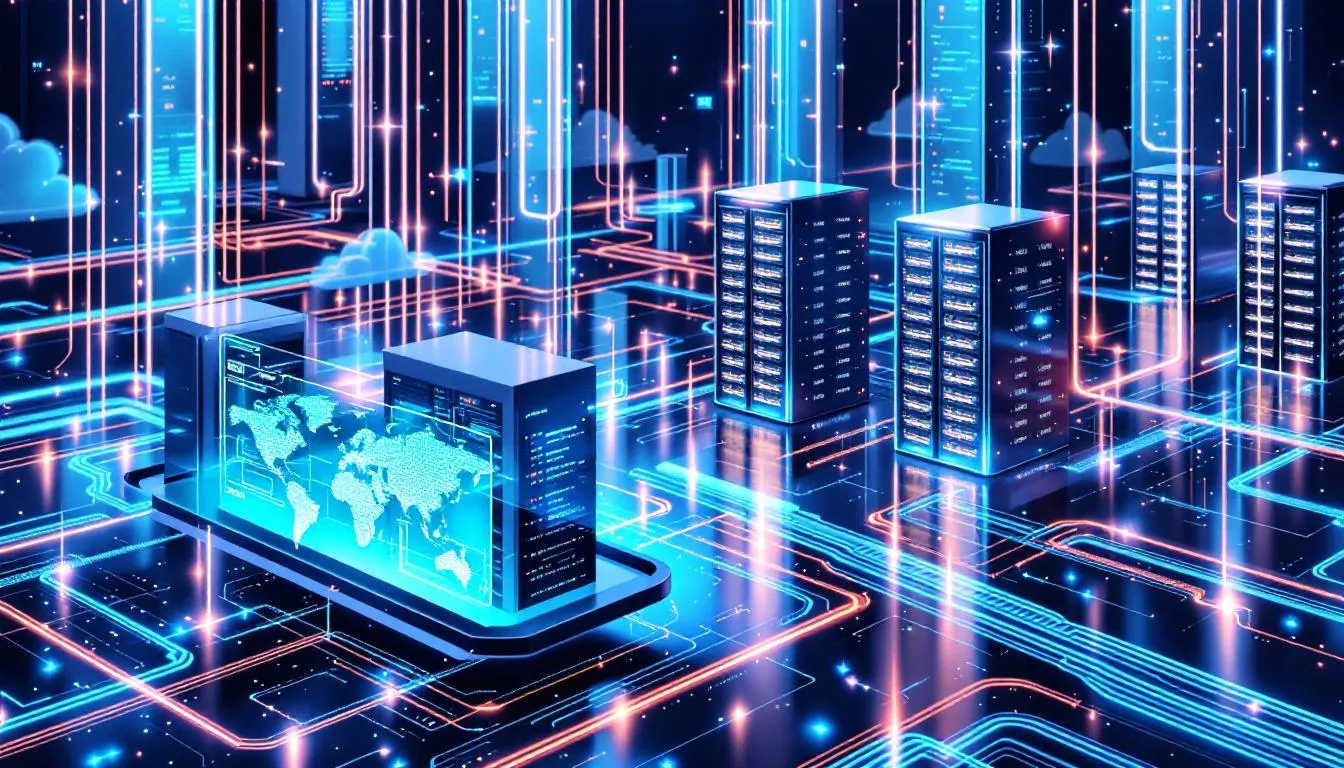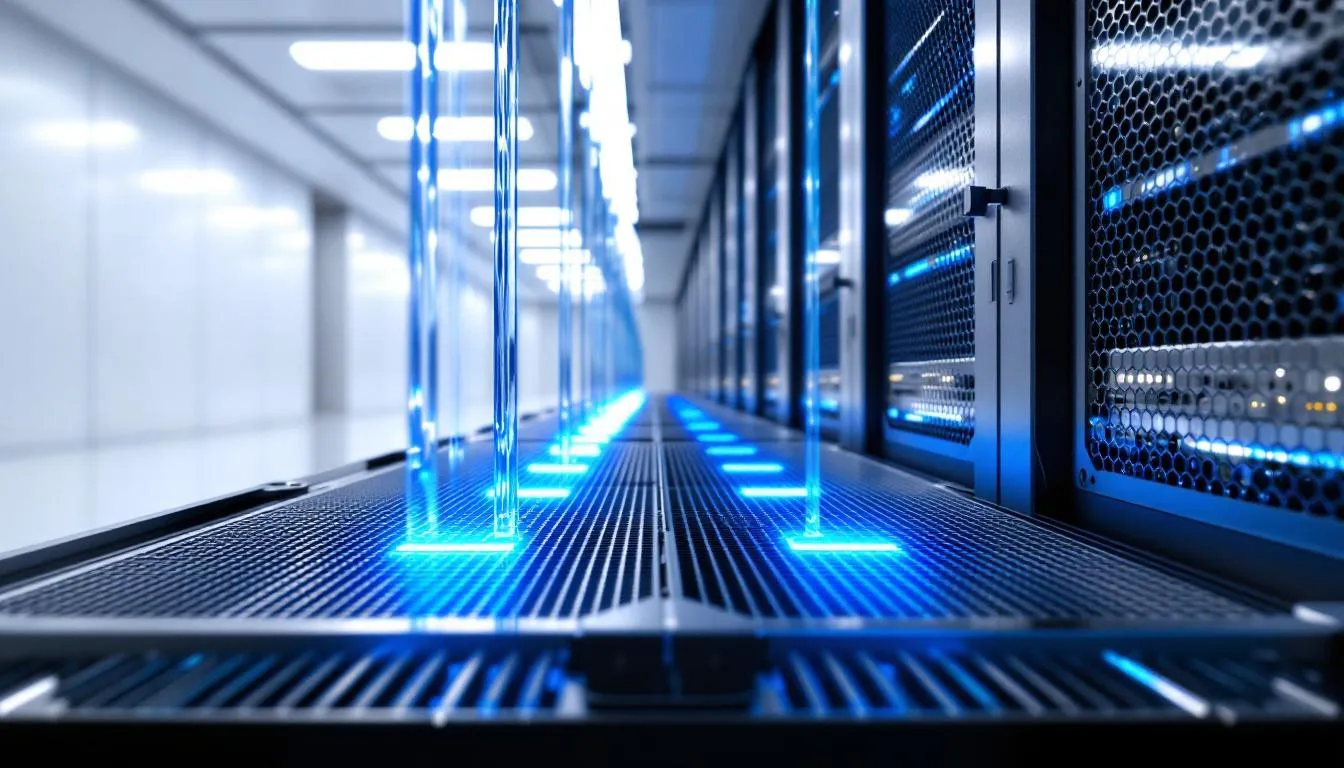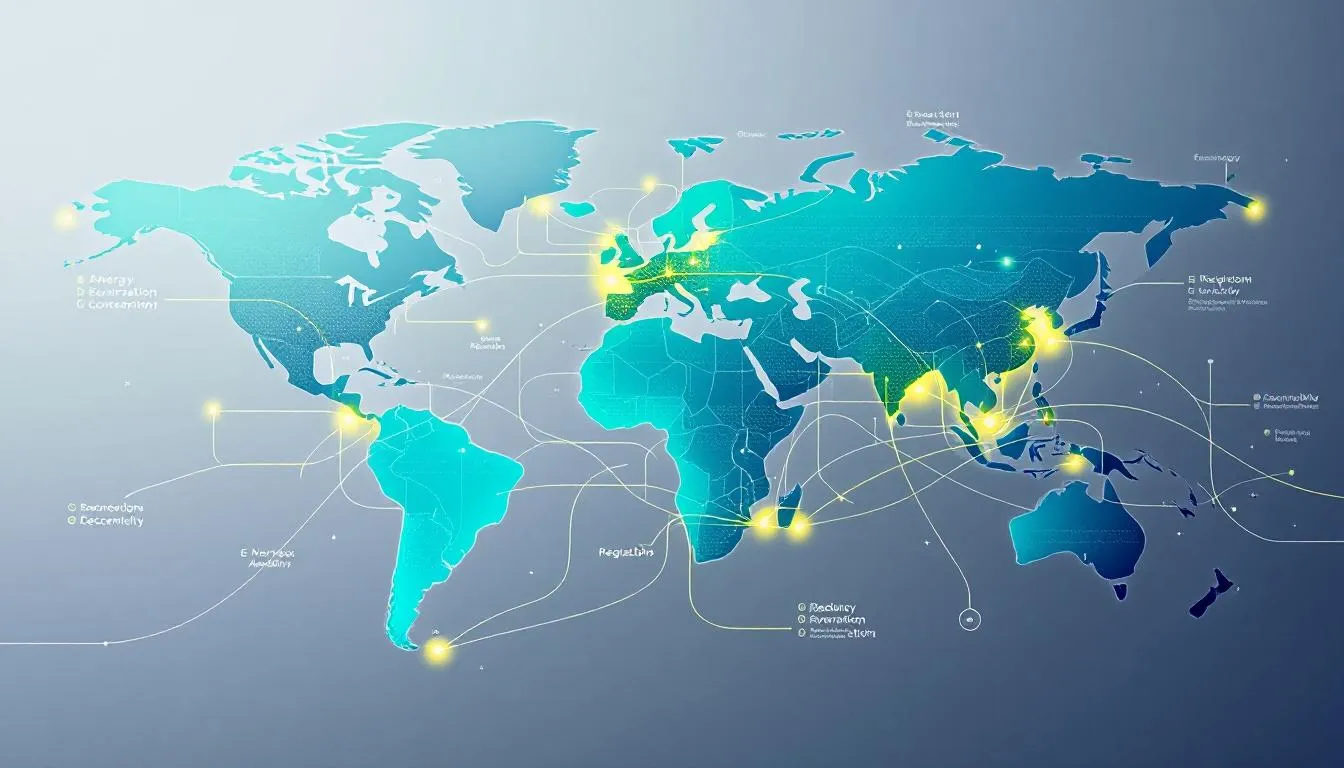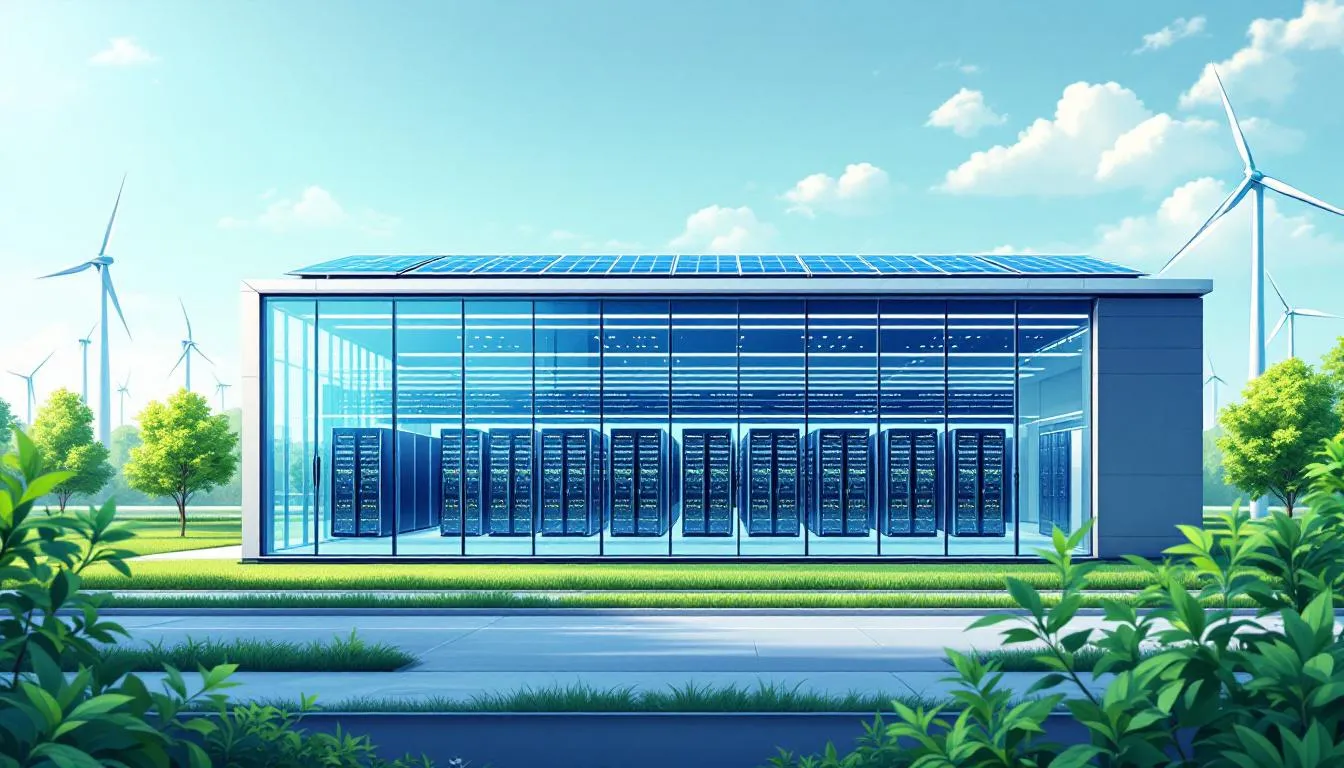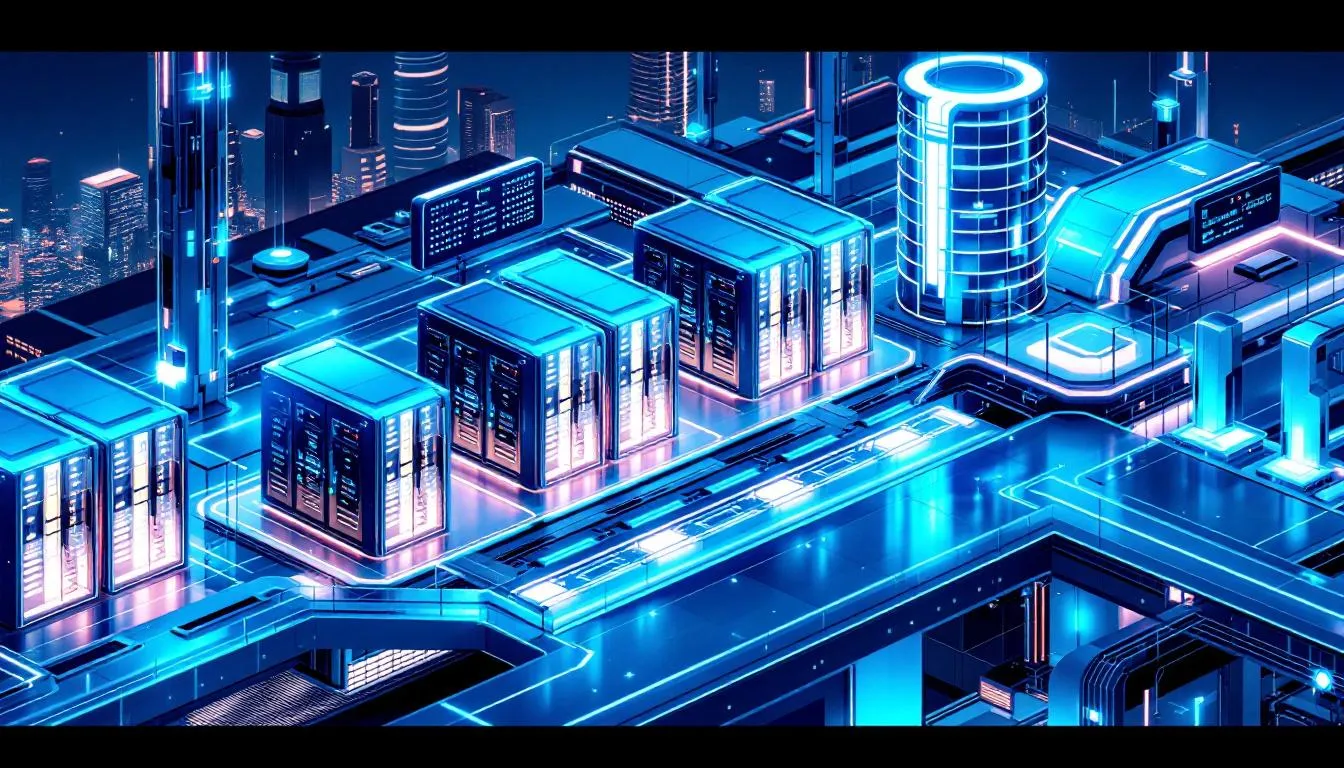
The data center industry is rapidly evolving, driven by AI, energy efficiency, and advanced cooling systems. Key innovations are shaping its future, addressing growing computational demands, and improving environmental sustainability. This article explores the top trends and technologies pushing the data center industry forward.
Key Takeaways
- The integration of AI in data centers is driving significant investment in infrastructure, enhancing operational efficiencies and necessitating innovative cooling solutions to manage increasing heat generation.
- Energy efficiency is becoming critical as data centers face skyrocketing electricity demands; innovations in onsite power generation and advanced cooling technologies are essential to mitigate environmental impacts and ensure reliability.
- Regional factors, evolving regulatory requirements, and supply chain challenges are shaping data center development, prompting operators to explore new locations and sustainable practices to remain competitive.
AI’s Impact on Data Center Growth
Artificial intelligence (AI) is undoubtedly one of the most transformative forces in the data center industry. The integration of AI applications requires substantial computational resources, prompting a surge in demand for specialized data centers designed to handle these workloads. As AI technology evolves, data centers must continuously adapt to provide the necessary infrastructure for emerging tech demands.
This adaptation is driving significant investments in AI infrastructure, with hyperscalers leading efforts in AI chip design to optimize performance. The need for efficient data center infrastructure to support AI is pushing the boundaries of data center design and operations. Large data centers are being equipped with advanced AI technologies to enhance operational efficiencies and reduce costs.
One of the key benefits of AI in data centers is predictive maintenance. AI-driven predictive maintenance helps companies minimize downtime and ensure seamless operations by identifying potential issues before they occur. Google’s implementation of AI to manage cooling systems, which resulted in a 40% reduction in cooling costs, is a testament to the potential of AI in enhancing data center efficiency.
Moreover, AI allows for dynamic workload management, enhancing service delivery and customer experience by efficiently allocating computational resources. This capability is crucial for handling the ever-increasing data center demand driven by AI and other high-performance computing applications.
As heat generation in data centers increases, liquid cooling solutions are becoming essential for managing these high-performance needs. Despite some recovery in supply chains, challenges remain, particularly concerning AI-optimized chip shortages. These constraints highlight the need for continuous innovation and flexibility in the data center sector to keep pace with the rapid advancements in AI technology.
Energy Efficiency and Power Management
The energy demands of data centers are skyrocketing, with electricity demand in the U.S. expected to rise to 9% of total generation by 2030, up from 4% in 2023. This surge is driven by the increasing computational requirements of AI and other high-performance applications. Predictions indicate that the energy demand from data centers may double by 2030, raising concerns about grid reliability.
Data centers are increasingly turning to AI technology to optimize energy usage and efficiency amid growing energy demands. Innovations in energy efficiency include:
- Improved cooling technologies that play a crucial role in reducing energy consumption
- Advanced cooling systems essential for maintaining efficient data center infrastructure
- Onsite power generation solutions to address the challenges of rising power densities
Access to reliable and low-cost renewable energy is becoming a significant factor in data center development, particularly in regions outside the U.S. Onsite power systems, such as microturbines and solar power, are being implemented to reduce energy costs and mitigate transmission losses associated with traditional grid power supply. Securing sufficient electricity for data centers is a pressing concern, with some regions facing potential power shortages as early as 2026.
Leveraging these innovations and focusing on energy efficiency enables the data center industry to meet growing energy demands, minimize environmental impact, and ensure reliable power supply.
Liquid Cooling Systems Revolutionize Data Centers
Cooling systems are a critical component of data center infrastructure, and the market for liquid cooling is experiencing rapid growth. Key points include:
- The data center liquid cooling market is expected to grow from $5.38 billion in 2024 to $17.77 billion by 2030.
- This represents a compound annual growth rate of 21.6%.
- Growth is driven by the need for efficient thermal management of high-density workloads.
- Escalating demands of AI and high-performance computing applications also contribute to this growth.
Direct liquid cooling is projected to account for over 68% of the liquid cooling market by 2024. This method, along with innovative cooling technologies like immersion cooling and direct-to-chip cooling, is enhancing heat management in data centers and cooling units. These advancements are crucial for maintaining data center efficiency and supporting the rapid expansion of cloud computing and other data-intensive applications.
The introduction of liquid cooling systems is not just about managing heat; it’s about enabling the next generation of data center developments. As traditional air-cooling methods become less effective for high-performance computing needs, liquid cooling is emerging as a solution to meet the demands of modern data center operations. This shift is paving the way for more efficient and sustainable data center infrastructure.
Regional Dynamics Shaping Data Center Development
The location of data centers is influenced by a variety of regional factors, including energy access, connectivity, and regulatory requirements. The U.S. currently represents about 60% of the global data center capacity, attributed to reliable energy access and strong connectivity. However, growing competition for land and urbanization is increasingly limiting the physical expansion capabilities of data center locations, highlighting the importance of a central location and data center knowledge in strategic planning.
Regulatory requirements around data security and localization are significantly impacting where data centers and physical locations are being established. These regulations, along with supply constraints and increasing costs, are driving developers to look for alternative locations beyond traditional data center hubs. Geopolitical shifts towards more nationalistic production models are further complicating global supply chains for data centers.
By 2025, about 7 GW of data center capacity is expected to be completed globally, with an anticipation of another 10 GW to begin construction the same year. AI applications that are less sensitive to latency demands are allowing for data centers today to be established in more cost-effective and sustainable locations. This shift is reshaping the digital infrastructure landscape and opening up new opportunities for data center development.
Overcoming Supply Chain Constraints
The data center industry is currently facing significant challenges due to supply chain constraints, which challenge operators in securing necessary resources for development. Ensuring timely access to these resources is becoming increasingly difficult, posing a major concern for data center operators. Factors contributing to supply constraints include power availability issues and the overall impact of regulatory environments.
Lead times for procuring critical data center equipment for data centers have increased dramatically, extending from months to years. Disruptions in the supply chain can arise from any component, highlighting the interconnected nature of procurement for data center components. Infrastructure bottlenecks in power transmission and regulatory approval delays can lead to significant barriers in developing new data center sites.
Extending high-capacity power lines can take four years or more, further exacerbating the delays in data center development. Overall, these barriers and constraints significantly impact the ability of the data center ecosystem to expand and innovate. Addressing these challenges requires advanced supply chain design and optimization to enhance visibility and planning for data center operations and network infrastructure.
The Role of Nuclear Power in Data Centers
Nuclear power is emerging as a preferred solution for the energy demands of data centers. Small modular reactors (SMRs), which have a power output range of 1.5 to 300 megawatts, are gaining attention for their potential application in data centers. The development of SMRs aligns with the push for cleaner energy sources aimed at meeting the power capacity demands of data centers.
SMRs can be deployed in various locations, enhancing energy access and sustainability for data centers. Integration of nuclear power can help stabilize energy costs for data center operators over time, providing a reliable and consistent energy source. Tax incentives, like the Clean Energy Production Tax Credit, further support clean energy investments needed for data centers to meet increasing energy demands.
The Department of Energy is focusing on an array of clean energy solutions, including nuclear energy, to address the growing electricity demand from data centers. This integration of nuclear power highlights the industry’s commitment to sustainable and reliable energy solutions.
Onsite Power Generation for Energy Independence
Onsite power generation in data centers is crucial for achieving energy independence and reliability. Generating and storing energy locally allows data centers to maintain continuous operations during grid outages, ensuring a reliable, independent energy source. This capability is crucial for maintaining efficient data center infrastructure, supporting ongoing operations, and utilizing uninterruptible power supplies, thereby enhancing power usage effectiveness.
Implementing microgrids allows data centers to generate and store energy locally, alleviating pressure on the broader power grid. These microgrids can incorporate renewable energy sources, such as solar power and microturbines, to reduce energy consumption and enhance sustainability. Onsite power generation not only supports energy independence but also contributes to the overall efficiency and resilience of data center operations.
Quantum Computing and Future Data Center Applications
Quantum computing stands at the frontier of technological advancement, promising to revolutionize data center capabilities. Microsoft has introduced Majorana 1, the first quantum processor using topological qubits, marking a significant step towards practical quantum computing. These topological qubits offer intrinsic error protection, making large-scale implementation more viable compared to traditional qubit systems.
Xanadu’s Aurora, designed as a modular and interconnected quantum machine, addresses one of the major challenges in quantum computing: scalability. This design allows for vast scalability, which is essential for the practical application of quantum computing in data centers.
Quantum computing is expected to transition from experimental to practical applications within data centers, enhancing capabilities for complex computations. This shift will enable data centers to handle tasks that were previously computationally prohibitive, opening new possibilities for industries reliant on data-intensive operations.
As quantum computing becomes more integrated into data centers, it will drive new data center developments and reshape the data center ecosystem. The potential for quantum computing to solve complex problems quickly and efficiently will make it an invaluable tool in the future of data center operations.
Enhancing Data Center Security Layers
Security is a paramount concern in the data center industry, and modern data centers utilize a comprehensive five-layer security framework to protect their assets. This framework includes:
- Perimeter
- Premises
- Building
- Server rooms
- Server racks
Each layer has its own set of security measures.
Advanced surveillance technologies, such as thermal cameras and radar, are employed to monitor and secure the perimeter of data centers. These technologies ensure that any unauthorized access attempts are detected and addressed promptly. At the building level, access control systems are implemented to ensure that only authorized personnel can enter.
Within the server rooms, high-resolution video cameras are used to monitor activities and can zoom in on specific areas if unusual activities are detected. Notifications are sent to security teams if there are any unauthorized activities at the server rack level, ensuring a rapid response to potential threats.
Integrated security systems allow for centralized monitoring, reducing the need for constant human supervision and enhancing the overall security posture of data centers. By implementing these multi-layered security measures, data centers can protect their critical infrastructure and maintain the trust of their clients.
Environmental Sustainability in Data Centers
Environmental sustainability is gaining more significance in the data center industry. Its importance continues to grow. Using renewable energy sources within onsite power solutions can significantly lower greenhouse gas emissions from data centers. This shift towards renewable energy is essential for reducing the environmental impact of data centers and promoting sustainability.
Data centers are being encouraged to strive for 100% renewable energy, aligning with global sustainability goals. Relying more on fossil fuels can increase carbon footprints and lead to potential regulatory penalties, making the shift to renewable energy sources even more urgent.
Sustainability measures in data centers include environmental control measures and operations processes guided by 100% renewable energy initiatives. These measures not only reduce energy consumption but also enhance the overall efficiency and sustainability of data center operations.
Prioritizing environmental sustainability allows the data center industry to contribute to global climate change efforts and promote a greener future. This commitment to sustainability will help ensure that data centers remain a vital and responsible part of the global digital infrastructure.
Community Engagement and Local Impact
As data centers continue to expand, their impact on local communities cannot be overlooked. Communities often express concerns about the cost allocation for grid upgrades and energy affordability related to data centers. These concerns highlight the need for data center operators to engage with local communities and address their needs and expectations.
Local communities are also worried about the impact of data centers on vital resources such as land and water. Data center operators must work closely with community stakeholders to ensure that their operations do not negatively impact these resources and that they contribute positively to the local economy.
Financing Trends in Data Center Development
The financial landscape of the data center industry has shown significant investment activity, with about $7 billion in annual investment noted consistently since 2020. In 2025, data center development will require approximately $170 billion in financing to support both development and permanent purposes. This substantial investment underscores the importance of the data center industry in the global economy.
Emerging markets are increasingly attracting data center investments primarily due to enhanced energy availability and favorable regulatory environments, responding to market demand. These markets offer new opportunities for data center development and expansion, driving growth in the global data center ecosystem.
Despite the notable interest from investors, the trading volume of data centers is expected to see only modest growth in 2025. However, projections indicate that rental rates for data centers will approach record highs due to sustained demand and limited supply. This trend highlights the ongoing demand for data center space and the critical role of data centers in supporting digital infrastructure.
As the data center industry continues to grow, securing financing for new data center developments will be essential for meeting the increasing demand for data center services. Attracting significant investments in infrastructure development will enable the industry to continue innovating and expanding to meet the digital world’s needs.
Future Outlook for the Data Center Industry
The future of the data center industry is poised for significant growth and transformation. By 2025, the following advancements are set to significantly shape the industry:
- AI advancements
- Immersion cooling
- Quantum computing
- Natural gas
These transformative advancements are expected to optimize performance and drive efficiency in data centers.
Immersion cooling technology is among the most impactful innovations, offering enhanced cooling efficiency and supporting high-performance computing needs. Two phase immersion cooling will also play a crucial role in the future of data centers, enabling complex computations and new applications.
Advanced supply chain design and optimization software can enhance visibility and planning for data center operations, allowing for better management of operational risks. Signs of improvement in the data center supply chain, such as reduced lead times for servers and stabilized energy prices, indicate a positive outlook for the industry.
The convergence of emerging technologies and supply chain innovations is projected to drive transformative growth in the data center sector. As the industry continues to evolve, data centers will become more efficient, resilient, and capable of meeting the demands of a rapidly changing digital landscape, particularly in the realm of data center computing and data center dynamics.
Summary
In summary, the data center industry is undergoing a period of rapid innovation and growth. AI is driving significant changes in data center infrastructure and operations, enhancing efficiency and reducing costs. Energy efficiency and power management are critical for meeting the growing energy demands of data centers, with innovations in cooling technologies and onsite power generation playing a key role.
Liquid cooling systems are revolutionizing data center cooling, while regional dynamics and supply chain constraints are shaping the development of new data centers. The integration of nuclear power and onsite power generation solutions are providing reliable and sustainable energy sources for data centers.
Quantum computing is set to transform data center applications, enabling complex computations and new capabilities. Enhancing security layers and prioritizing environmental sustainability are essential for the future of data centers. Engaging with local communities and addressing their concerns is also crucial for the responsible growth of the industry.
As the data center industry continues to evolve, securing financing for new developments and leveraging emerging technologies will be key to meeting the increasing demand for data center services. The future of data centers is bright, with transformative innovations driving efficiency, resilience, and sustainability.
Frequently Asked Questions
How is AI impacting data center growth?
AI is significantly influencing data center growth by increasing demand for specialized facilities while improving operational efficiency and cost-effectiveness through predictive maintenance and dynamic workload management.
What are the key strategies for improving energy efficiency in data centers?
To improve energy efficiency in data centers, integrate AI technology for optimized energy usage, adopt advanced cooling technologies, and utilize onsite power systems to lower energy costs and minimize transmission losses.
Why are liquid cooling systems important for data centers?
Liquid cooling systems are vital for data centers as they efficiently manage high-density workloads and enhance overall efficiency through superior thermal management. This technology is increasingly necessary to meet the demands of high-performance computing.
How is nuclear power being integrated into data centers?
Nuclear power, especially through small modular reactors (SMRs), is being integrated into data centers to offer reliable and sustainable energy, helping to stabilize energy costs and advance clean energy initiatives. This integration supports the growing demand for environmentally friendly power solutions in the tech industry.
What is the future outlook for the data center industry?
The data center industry is poised for substantial growth, propelled by advancements in AI, immersion cooling, and quantum computing, which will foster more efficient and sustainable operations. This evolution underscores the industry’s critical role in supporting the increasing demand for data processing and storage.

